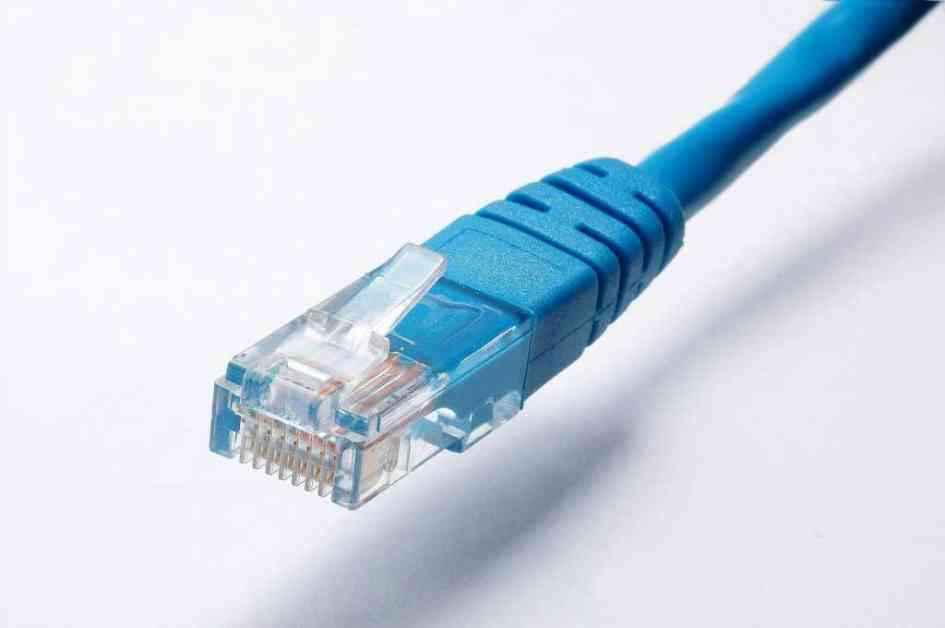So, like, if you’ve been scrolling through Ethernet cables online, you might have noticed that they have names like CAT 5, CAT 6, CAT 7, and CAT 8. And no, we’re not talking about cute little kitties here…meow!
So, what’s the deal with all these CAT labels, and is there any real difference between these Ethernet cables?
Well, the CAT label in Ethernet cables stands for “category,” which basically tells you the standard and specifications of the cable. You can figure out which category a cable belongs to by looking at the number at the end of its name.
The main thing that sets apart the different categories is the rated performance of each cable. They also have different wire setups and other variations in how they are made, like how tightly they are twisted together, and some even have inner plastic tubing.
Just like USB cables, Ethernet cables get faster and more efficient with each new generation that comes out. This is great news for gamers who are on the hunt for faster and more reliable cables to ensure lag-free network gaming.
Now let’s talk about the data transfer speeds of these CAT cables.
CAT 5 and CAT 5e cables are from the early days of Ethernet cables, dating back to the early noughties. CAT 5 cables can transmit data at speeds up to 100Mbps at 100MHz, while CAT 5e cables are a bit better, offering speeds up to 1,000Mbps at 100MHz. This means that CAT 5e cables are a bit more stable and less likely to cause lag compared to CAT 5 cables.
Both CAT 5 and CAT 5e cables are fast enough for most household or work-related network needs, whether you’re connecting multiple PCs or external devices like printers. They’re commonly used in small offices, schools, and colleges for things like hubs, switches, and routers.
But, since the newer CAT 6 cables hit the market, gamers and users needing higher data transfer speeds have been all over them. This is because CAT 6 cables are a whopping 10 times faster than CAT 5 cables. They can transfer data at speeds up to 10Gbps and at frequencies up to 250MHz.
These cables also have better shielding to prevent electromagnetic interference, making them less prone to cross talk and noise. This makes them even more stable and ideal for users who do a lot of video conferencing or work in the cloud — perfect for professional environments like hospitals or government agencies.
Now, moving on to CAT 6a cables, which are a step up in functionality from CAT 6 cables. CAT 6a cables can transfer data at the same 10Gbps speed as CAT 6 cables, but they support even higher frequencies (up to 500MHz). So, if you’re looking to build a super stable 10Gbps network, these cables will give you even more reliability against interference and lag during heavy data loads.
After CAT 6a comes CAT 7 cables. These Ethernet cables also provide fast transfer speeds of up to 10Gbps, but they can support even faster frequencies of up to 600MHz.
The issue with CAT 7 cables, though, is that they were initially designed to work with GG45 or TERA connectors instead of the more common RJ45 connectors used in CAT 5, CAT 6, and CAT 6a cables. GG45 and TERA standards never really caught on with hardware manufacturers.
CAT 7 cables can be used with RJ45 connectors, but this reduces their bandwidth back to that of a CAT 6 or CAT 6a cable, so you won’t get that extra speed boost.
And then we have CAT 8 Ethernet cables, the fastest cables available today. These bad boys break the 10Gbps data transfer limit of previous generations by using a 2GHz signal to move data at speeds up to 20Gbps or 40Gbps.
Due to their incredibly high data transfer speeds and bandwidth, these cables are commonly installed by big businesses like data centers, financial institutions, research institutions, and broadcasting studios that require the fastest Ethernet connections out there.
But hey, I’ve also heard of some operators offering these cables for gamers, so their popularity in gaming is on the rise.
Okay, so now that we’ve covered all the different types of Ethernet cables, you should also consider the length of the cable you need before making a purchase, because each CAT standard has its own maximum cable length. Happy hunting for that perfect cable!
So, like, if you’re wondering which Ethernet cable is best for PC gaming, the theoretical answer would be a CAT 8 cable. But let’s be real, most gamers won’t really need the super fast speeds of a CAT 8 cable because of factors like the speed of their router or modem. The main reason to get a CAT 8 cable would be to future-proof your Ethernet setup.
CAT 6 or CAT 6a cables are totally fine for gamers, since the fastest PC desktop Ethernet cards only support up to a maximum 10Gbps transfer speed (like the Asus XG-C100C). Even 1Gbps speeds are fast enough for gaming. CAT 6 and CAT 6a cables offer a great balance between performance, reliability, and price.
So, there you have it, all the ins and outs of Ethernet cables. Just make sure you choose the right one for your needs and you’ll be good to go!











